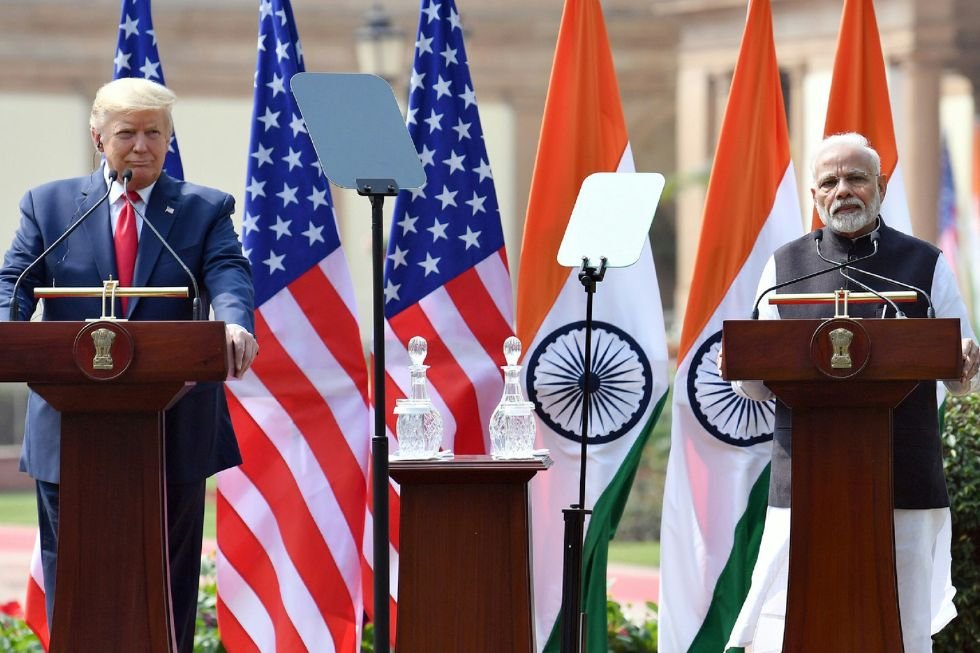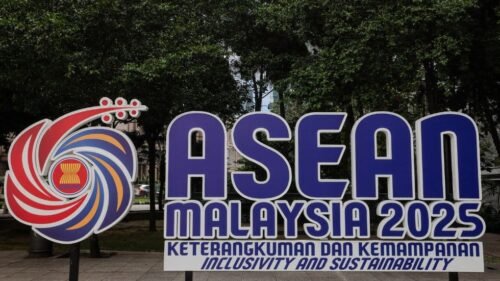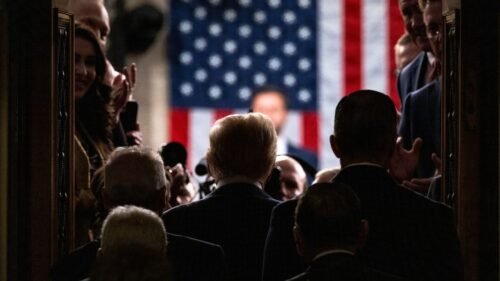A sharp turn came in US–India trade talks when US President Donald Trump imposed a 25% tariff plus penalties on Indian goods over its trade with Russia, just as negotiations were nearing Trump’s self-imposed deadline.
Breaking from negotiations, Trump’s tariff salvo was an attempt to address simmering tensions in the Indo-US relationship by leaning on Pakistan through an oil deal and tariff concessions. Was this sudden shift a product of Trump’s ambitious economic agenda, or a mask for strategic signaling and transactional politics in this trade affair?
The latter seems likely, given America’s history of using deliberately exhaustive trade talks as a strategic tool to exert pressure on other nations, extract concessions or advance broader strategic objectives.
The deal
India was negotiating a Bilateral Trade Agreement (BTA) with the US, which began in February. By April, an outline had been drawn, reflecting US priorities of reducing India’s trade barriers and addressing its $45.7 billion goods trade deficit. From February to July, negotiations grew tense as India refused to liberalize or open up its agricultural and dairy sectors to US markets. India also pressed for tariff concessions, including lower US duties on steel (50%) and aluminum (25%), and preferential access for labor-intensive exports such as textiles, gems, jewelry and IT services. In return, India signaled willingness to provide the US greater market access.
However, apart from these two sticking points, India also resisted US demands for reduced tariffs on auto components and acceptance of US Federal Motor Vehicle Safety Standards, prioritizing its domestic industry and the Make in India campaign. Similarly, regarding non-tariff barriers, the US criticized India’s Quality Control Orders (QCOs) and import regulations, which it viewed as barriers to market access for US goods. However, India defended them on the grounds of consumer and domestic industry safety.
Trump’s negotiation style
The negotiations thus offered potential gains for both sides, but the costs and contentions were high. It made them intense and rigorous, conditions ill-suited to Trump’s negotiating style. The US’s negotiating approach under Trump, specific to trade and tariff issues, has been unconventional and rushed.
A recent deal with Vietnam was concluded hastily under pressure. The US exploited Vietnam’s trade surplus and export dependence, using tariff threats and prolonged talks to secure concessions. Despite months of negotiation and goodwill gestures, such as liquified natural gas (LNG) deals, Vietnam ended up facing a 20% tariff and transshipment penalties — far less favorable than its proposed 0% reciprocal tariff.
Similar tactics were seen with countries like Japan, Indonesia, South Korea and many more. These examples illustrate Washington’s tactics of achieving win-win trade deals, even with allies and partners, demonstrating how transactional diplomacy now colors their trade relations.
However, a closer look suggests that economic or trade calculations do not solely drive these deals. The US is using these trade deals as geopolitical tools — deliberately exhaustive negotiations to push countries toward aligning with its strategic objectives.
Economic attrition diplomacy
Economic attrition diplomacy involves leveraging prolonged trade negotiations to pressure a counterpart into aligning with geopolitical goals, often by creating economic uncertainty or exploiting asymmetric dependencies.
Vietnam’s case illustrates this. The US pressed Hanoi to cut reliance on Chinese industrial goods and curb transshipments, directly serving its anti-China agenda. The negotiations were lengthy, with multiple rounds reflecting prolonged and exhaustive talks to force Vietnam to concur with the deal, leaving it little room to maneuver.
The cases of Indonesia and Japan are also noteworthy. The US pressured Indonesia to align its anti-China goals, primarily due to Indonesia’s attempt to diversify trade with BRICS members, and a $10 billion investment deal with China made in November 2024.
In the case of Japan, Trump risked their bilateral relations by escalating dramatically: threatening 25% tariffs, then actually imposing them on Japanese goods, including automobiles, effective August 1. This was an unprecedented move against a US ally. Japan, burdened by its trade surplus and alliance status, yielded partial concessions under tariff threats and geopolitical pressure.
South Korea, too, faced a tariff threat of 25% in July, and ended up with a 15% “reciprocal” tariff, effective August 1. The US sought geopolitical advantages from Korea, pressuring it to increase dependency on US purchases, specifically F-35 fighter jets. Although no deal was finalized, South Korea offered greater market access for US goods, as well as defense commitments to avoid higher tariffs.
These tactics reveal that US trade negotiations often serve a larger purpose: pushing countries to align with its anti-China strategy under the guise of economic bargaining. These echo Washington’s action from five years ago, when it used economic attrition diplomacy against China. The US attempted to curb China’s technological rise by targeting firms like Huawei, pressured China on issues like intellectual property theft and signaled strength to its own allies.
During trade negotiations, the US repeatedly escalated tariffs and introduced complex demands, including structural changes to China’s economy, prolonging the uncertainty and pressuring China. Subsequently, China yielded partial concessions, providing the US with some limited success.
Aggressive attrition driven by frustration
Unlike other countries that faced standard coercion from the US with only tariff threats, India was hit with multiple salvos — tariffs, penalties and an embrace of Pakistan. The reasons were clear: the Russia factor, trade with Iran and India’s non-compromising posture during trade negotiations.
This aggressive attrition behavior is motivated by geopolitical frustration, something the US is familiar with acting on. In the 1930s and 1940s, US economic attrition against Japan, driven by frustration, culminated in the oil embargo of 1941, contributing to the escalation of World War II. Negotiations were prolonged. The US demanded Japan withdraw from China and Indo-China, while Japan sought recognition of its territorial gains, creating a deadlock with no progress.
A similar situation is unfolding between the US and India today, where the former harbours geopolitical suspicion over India’s relationships with Iran and Russia, alongside deadlocked trade demands. These factors have likely fueled frustration and driven the US to send a strong strategic message by escalating risks and attrition, perhaps setting an example on the global stage.
Unconventional transactionalism: India must reassess its strategy
India must read the negotiating table more carefully and patiently, adopting measured and mixed negotiating styles instead of a confrontational approach, which at times frustrates the US.
As India looks toward the prospect of a mini-deal by September-October, it should aim for strategic prolongation — progress with limited concessions — rather than dragging talks with no real progress. This will create more room for negotiations and reduce US frustration to some extent.
India must also leverage its geopolitical value and diversify its trade relationships with Europe and other countries. This will strengthen India’s bargaining position, soften US demands and deter extreme measures.
A similar approach saved South Korea from higher tariffs despite having no deal with the US, as South Korea adopted strategic prolongation, used measured negotiation tactics offering room via concessions and resisted hasty or pressured deals.
India must remember that Trump is a master at playing unconventional transactional cards, where deals are more important than relations. India should demonstrate that an agreement is in progress and that there is something on the table, rather than leaving it empty.
[Organiser first published a version of this piece.]
[Yaamini Gupta edited this piece.]
The views expressed in this article are the author’s own and do not necessarily reflect Fair Observer’s editorial policy.
Support Fair Observer
We rely on your support for our independence, diversity and quality.
For more than 10 years, Fair Observer has been free, fair and independent. No billionaire owns us, no advertisers control us. We are a reader-supported nonprofit. Unlike many other publications, we keep our content free for readers regardless of where they live or whether they can afford to pay. We have no paywalls and no ads.
In the post-truth era of fake news, echo chambers and filter bubbles, we publish a plurality of perspectives from around the world. Anyone can publish with us, but everyone goes through a rigorous editorial process. So, you get fact-checked, well-reasoned content instead of noise.
We publish 3,000+ voices from 90+ countries. We also conduct education and training programs
on subjects ranging from digital media and journalism to writing and critical thinking. This
doesn’t come cheap. Servers, editors, trainers and web developers cost
money.
Please consider supporting us on a regular basis as a recurring donor or a
sustaining member.
Will you support FO’s journalism?
We rely on your support for our independence, diversity and quality.









Comment